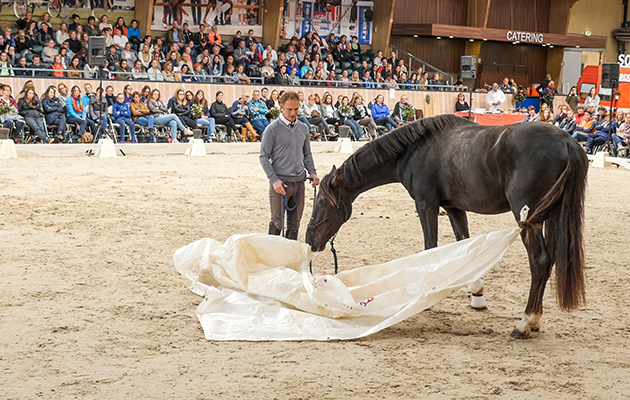
Training methods for fearfull horses
In frightening or unfamiliar situations horses often react with flight or avoidance responses, which can lead to potentially dangerous situations for both the horse and rider. This article aims to investigate which of three different training methods (habituation, desensitisation and counter-conditioning) were most effective in teaching a horse to react calmly to unknown stimuli.
Twenty-seven two-year-old warmbloods were randomly divided in three training groups. Each horse received 5 training sessions of 3 minutes per day, and heart rate and behavioural responses were recorded. The habituation group was exposed to the full stimulus (a white, moving nylon bag) until they met a predefined habituation criterion. The desensitisation group was gradually introduced to the stimulus and habituated to each step before the full stimulus was applied. The counter-conditioning group learned to associate the stimulus with a positive food reward before full exposure took place.
The results show that horses trained with desensitisation showed less flight responses and needed less training sessions to react calmly to the test stimuli. Furthermore, all horses in this group eventually were calm in response to the stimuli, while some horses in other groups did not reach this result. The counter-conditioning group appeared to be the training method that required the highest number of training sessions to reach the desired result.
Expert opinion by Els Smet
Although the results show that desensitisation appeared to be the most effective training method for training horses in frightening situations, further research should be done to investigate the role of other trainings principles, such as positive reinforcement, in training horses.
> From: Christensen et al., Equine Vet J 38 (2006) 439-443. All rights reserved to Wiley Online Library. Click here for the online summary.


